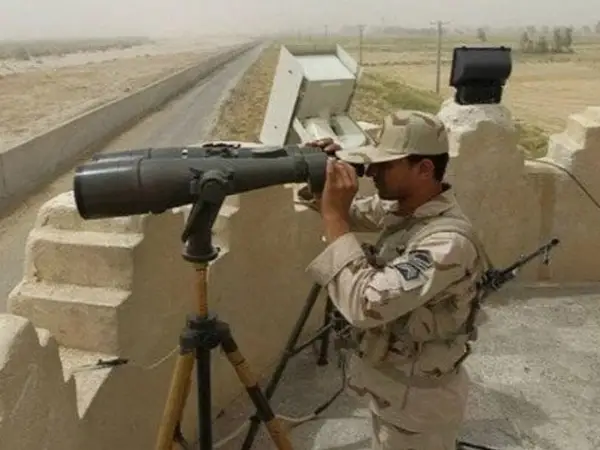An aerial photo circulating on social media has led to extensive criticism of the government for “conceding” thousands of hectares of Iranian land to the Taliban.
The photo shows a 130 km long security wall built by Iran at some distance from the border demarcation line with Afghanistan which is along the Hirmand (Helmand) River.
“Mistake in building the wall in Zabol border area is real ... The Taliban have seized the lands and claim the border corresponds to the wall. Thousands of hectares of Iranian soil is now in the hands of the Taliban,” Turkey-based dissident Iranian journalist Masoud Kazemi wrote in an X post Saturday.
Some opposition social media users hold the Revolutionary Guards (IRGC) responsible for the situation by building the wall and “handing over” the lands beyond it to the Taliban.
The wall that has cut farmers’ access to thousands of hectares of agricultural land that falls between it and the official border was built in early 2000s to inhibit drug-trafficking and illegal immigration in the northern parts of Sistan and Baluchestan Province.
It appears that before the Taliban seized power in Afghanistan there were no major problems regarding the Iranian land beyond the wall.
The Taliban act as though the border between the two countries corresponds to the wall and have on many occasions forcefully expelled the farmers from their lands and even clashed with Iranian border guards for what they say is illegal entry into Afghan soil.
In May a clash between Iranian border guards and the Taliban left at least two Iranians and one Taliban soldier dead. According to a report by Iranian reformist daily newspaper Ham-Mihan, since 2021 around 50 Iranians have been killed in border skirmishes with the Taliban.
Bloomberg reported last week that since May, the Taliban has deployed hundreds of suicide bombers to Afghanistan's border with Iran amid a major water dispute giving rise to concerns of a full-blown conflict. The Islamic Republic of Iran has also been building up its military presence in the area.
The halt in the flow of waters of Helmand River from Afghanistan has seriously affected the lives of hundreds of thousands in the southeastern province of Sistan and Baluchestan. Wetlands in Sistan have largely turned into salt flats, the once rich wildlife has disappeared, and many local villages abandoned.
In a commentary Saturday, the IRGC-linked Javan newspaper mildly criticized the Taliban for its human rights record, problems they have caused in their relations with their neighbors including Iran over water rights while praising them for expelling the United States, creating “a relatively stable government”, inhibiting power struggles inside the group, and moving towards economic stability and fighting against corruption.
The commentary also praised the Taliban for their military “achievements” against the opposition in Panjshir and other northern areas as well as against the Islamic State (Da’ish) in major cities including Kabul, Mazar-e Sharif, Herat and Jalal Abad.
Earlier this week, the IRGC-linked Fars news agency made an unprecedentedly harsh criticism of Iran’s Foreign Minister Hossein Amir-Abdollahian for what was perceived as an anti-Taliban stance expressed in a post on X (former Twitter).
“It is very surprising that despite several meetings with Taliban officials and hosting them, the minister of foreign affairs is unaware of the sensitivities of these matters and the costs that such statements may impose on the government and people of Iran,” Fars wrote.
Fars also claimed on Thursday that according to sources close to the Taliban negotiating team in Doha, the US Special Representative Thomas West has repeatedly demanded that the Taliban act as a destabilizing force against the Islamic Republic of Iran in return for the release of part of Afghanistan’s blocked assets. Allegedly, the Taliban turned down the demand.
Former Iranian diplomat Mohsen Aminzadeh in an interview with reformist Ham-Mihan newspaper this week said that between 1998 and 2005, during reformist Mohammad Khatami’s presidency, IRGC’s Quds Force and the foreign ministry worked in harmony regarding Afghanistan with the diplomatic apparatus taking the lead. It was during this time that the IRGC even cooperated with the United States in the war against the Taliban.
From 2005, when hardliner Mahmoud Ahmadinejad took over the government, the Quds Force completely sidelined the foreign ministry, a trend that continued during Hassan Rouhani’s presidency, and the Islamic Republic increased its collaboration with the Taliban against the United States, Aminzadeh said.
